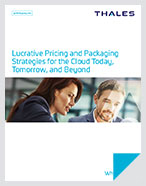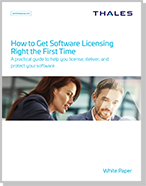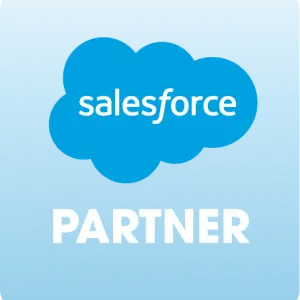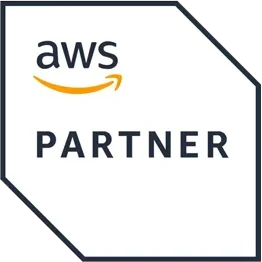Application packaging is the process that companies and organizations use to get necessary software onto the devices of relevant users with ease. It involves creating a package of files for each type or piece of software that a company uses. The benefits of this method are vast and involve cost savings and increased efficiency for the organization. It gives IT departments the ability to provide access to software (including the latest versions) in any easier and faster manner.
Companies that are looking to remain relevant and keep up with software and application trends (including increasing reliance on SaaS apps), must adapt a strategy today.
What does application packaging mean?

Think about your organization. You have tens if not hundreds or even thousands of types of software running at all times. Employees are using desktops, notebooks, tablets, and mobile phones. Application management techniques were developed to help organizations and companies manage their software assets better.
The impact of application packaging is far reaching and can help companies lower costs, minimize disruptions (both of service and user errors), and maximize efficiency across departments (marketing, finance, HR, and more).
Companies that engage in this process can upgrade software and deliver to users quickly to remain relevant and competitive. IT departments also acquire the ability to troubleshoot at a macro level. This saves times (and frustration instead of having to fix or update each individual workspace or device).
What is application packaging and deployment?
Deployment is when a server or device runs a specific piece of software. Deployment is important because it is the process that allows the application to work on the desired device. This may be a computer or mobile device or even a production environment or test server.
Goals
The first step in implementation and beginning application packaging training is to decide how the process will fit into your software management strategy. This means checking software inventory within the company, revisiting profile bundles, gather requirements, going through user testing and distributing software by moving it to the software distribution server.
The end goals of the process for companies are to increase efficiency and lower costs all while creating a standardized environment. Users also have a great advantage: it allows them to install software with zero technical knowledge (with clicking a button). Additionally, all settings can be pre-set so that a user can install a piece of software and begin using right away.
What does the application packaging process look like?
There are generally 3 steps in the packaging process: application discovery, application packaging and user acceptance testing. Some organizations also add a QA step in the process.
During the application discovery process, the application source file is validated and verified as functional. This is an important step because it is the basis of the application package that will eventually be created.
The next step is creating the package. During the discovery stage you will have mapped out the necessary requirements and therefore the second step is typically rather straightforward.
The last step is UAT. This step serves to check that the package works as it is supposed to before it is sent to production. In this step you want to make sure that the application is running as it was defined in the discovery phase.
The benefits of application packaging

Due to often requiring a significant initial investment, some organizations doubt the efficiency and necessity of the packaging process. However, there are several benefits for any company.
1. Lowering support costs – The process may be expensive at first, but in the long run it reduces support costs. This is because the process creates a stable environment that allows IT teams to address issues immediately and on a large scale. Not only that, during the application process, there are multiple rounds of testing, guaranteeing that by the time the software reaches the end user, issues will have been discovered already. This also reduces support costs in the long run.
2. Ease of distribution – For large companies, this is a major advantage. If you have hundreds or thousands of devices, installing software manually simply isn’t realistic. Application packaging allows you to distribute to all users, no matter where they are easily and quickly.
3. Software management – Once the software has been installed on the relevant devices, IT teams are responsible for keeping everything working well, adding devices, fixing issues, etc. Using a Configuration Manager, IT teams are able to manage and deploy software in a significantly easier manner than without.
4. Minimizing security risks – Cybersecurity is a major threat today, and application packaging helps reduce the threat for organizations. This is because the streamlined process means that less users need to have “admin” status- an inherent security issue. Security issues can also come to light during the packaging process and be taken care of before becoming threats.
5. Control over software installation – No company wants to find itself installing unnecessary, or illegal, copies of software. This is because all software that is installed goes through the IT department. Individual users don’t have the ability to install software on their own.
What are examples of application packages?
Application packages are exceptionally common today and all users (both private and business-related) use them on a regular basis, without even realizing it.
Both system software such as Windows XP, Linux, Mac OS, anti-virus and more come in application packages. The same goes for common pieces of software such as Microsoft Office, iTunes, or Google Chrome.
All of these software examples can be installed easily due to packaging. If they weren’t packaged, users would be required to download and install multiple files, set up the configuration settings, and make sure the files were downloaded properly in order for the software to function as desired.
Application packaging best practices

1. Requirements gathering - This is a crucial step. IT teams (or whoever is responsible for the packaging process) must understand the needs of each application including the technical data and requirements.
2. Windows Installer Tech – This tech was created to help add apps and software to desktops. Use it!
3. Core images must be stable before beginning to package
4. Conflict management – Along the application packaging process, conflicts may arise between old and new applications. It is important to identify these conflicts with packaging tools as well as having processes set to address conflict resolution.
5. Grouping applications according to need/department – Not all pieces of software are used universally across a company. By grouping, IT departments can allocate software according to where it is specifically needed.
Software Monetization to maximize your potential
Sentinel software monetization software gives you the opportunity to reduce costs and increase efficiency while managing your software licensing needs.
With application packaging, software distribution has become easier than ever. Now, it’s time to use technology to create customized licensing solutions to make your customers happy, every time.
Want to get started? Contact a software monetization solution expert today.

Software Packaging and Pricing Strategies for the Cloud - White Paper
Lucrative Pricing and Packaging Strategies for the Cloud Today, Tomorrow, and Beyond Software pricing and packaging is an art form regardless of whether it’s delivered as a service or as physical on premise software. There is also a lot of science involved. This paper...

Navigate The Process of Licensing, Delivering, and Protecting Your Software - White Paper
How to Get Software Licensing Right The First TimeCheck out our practical guide to navigating the process of licensing, delivering, and protecting your software. Discover the importance of optimizing your software licensing. Avoid common mistakes with the expertise you...



